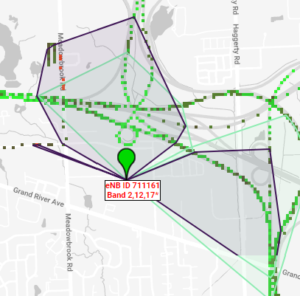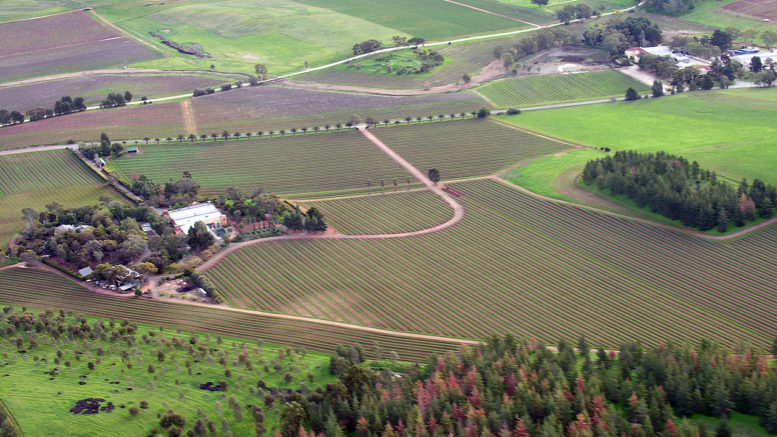If you live or work in a rural location, you might experience poor cell phone reception. As scenic and beautiful rural locations can be, they sometimes present challenges to making and receiving texts, calls, and data. At least one of these challenges is unique to rural environments. In Solid Signal’s ongoing efforts to educate you, our loyal readers, about ways to improve your cellular reception, we take a closer look at this situation outside the city limits. As always, we also show homeowners and businessowners how to fix these problems when they happen “out in the sticks.”
“I See the Cell Tower but Have No Signal!”
Does this sound like something you’ve said? We think we know what the problem might be: the tower isn’t broadcasting signal in your direction. Not all cell phone towers are omnidirectional, which means they send and receive signals in every direction. Some rural cell towers are “directional sector antennas” that broadcast signal in specific directions. The transmission beam in these antennas typically focus on remote country highways to offer travelers enhanced connectivity. If you live or work about three or more miles behind the tower, you probably won’t benefit from it.
Another reason you don’t benefit from being close to the tower: it’s owned by another carrier. While this is possible, it isn’t as likely. Most major wireless carriers share space on cellular towers across the country. Even regional carriers sometimes lease some of their bandwidth from the big four carriers – AT&T, Sprint, T-Mobile, and Verizon. Because of this, most users usually get the same amount of coverage regardless of the area they’re in. In most cases, it’s a matter of what I said above: your home or business is outside the cell tower’s beam. There’s one way to find out whether your issues are a result of transmission direction or carriers…
… Use This Cell Phone Tower Locator
Do you want to know whether your reception issues are caused by carrier issues or cell tower transmission beam direction? If so, log on to CellMapper.net. This online source lists most or all of the cell phone towers in every area across the country. It lets you know which local carriers have a presence on each tower. It also illustrates each tower’s transmission beam mapping. To use it, go to CellMapper and follow these easy steps:
-
Type the name of your wireless carrier in the slot marked “Provider”
-
In the slot labelled “Network,” enter your network type (4G-LTE, etc.)
-
In “Band,” select “all bands” for a quick search
-
Scroll through the listing of specific bands and select the one that’s appropriate
When you find your carrier’s tower in your area, click on the pin and scroll to zoom in. As you do, you’ll see blue, pink, or purple lines and shaded areas around the tower. These represent the transmission beam of each tower. It shows the exact area and range of nearly any cell phone tower in your area. (Note: The major carriers are putting in new towers all the time, so it might take CellMapper some time to catch up with all the carriers’ latest listings.)
What Focused Cell Tower Transmission Looks Like

The above image is an example of what a cell tower’s transmission beam looks like on CellMapper. I zeroed in on a cell phone tower near Solid Signal’s headquarters in Novi, Michigan. While this area is not in a rural location, it still illustrates the point I made above. The majority of its beam is focused on the freeway and neighborhoods in and around a section of Meadowbrook Road. When you go further down Meadowbrook to Grand River Road, the beam doesn’t reach this area. (Don’t worry! Those neighborhoods are covered by other towers.)
Other Reasons for Poor Cell Phone Reception
There is another reason why your rural home or business might be experiencing dropped calls and text or slow/interrupted data. It’s the same thing that causes these problems in the city or anywhere else: building materials. Does your home or workplace have metal, fiberglass insulation, and /or energy-efficient windows? All of these materials repel ingoing and outgoing cellular signals. These construction materials often cause dropped calls, missed texts, and slow or interrupted data.
Obstructions are another common enemy of solid cell phone reception. These often come in the way of trees, buildings, or mountains that are located between your building and the nearest cell phone tower. Quite simply, these obstructions are like someone standing between you and your TV set. In other words, they block transmission. Most cellular transmission experts agree that building materials and obstructions are the two biggest enemies to good reception, but there are other, lesser-known reasons for call drops too.
Best Cell Phone Reception in Rural Areas
While I’ve hopefully done a decent job of explaining why you might have cell phone reception issues, I know why you’re really here. You want to fix these problems so your home or business has reliable cell phone transmission. I get it, and I also have your solution. Actually, there are two possible solutions and both are delivered by Solid Signal. Here are the best two ways to improve cell phone reception in rural areas:
-
Cell Phone Signal Booster System: If you get the slightest amount of cellular signal in your home, a cell phone booster might improve it. It takes the faintest signal and amplifies it throughout the structure. This means that incoming and outgoing calls and texts are simultaneously amplified. This helps reduce or eliminate dropped calls, missed texts, and slow or interrupted data. The cell phone booster system you need depends on the size of your home and a few other factors.
-
Passive DAS System: DAS stands for “distribution antenna system,” which is a kind of cell bother system that puts multiple antennas throughout your facility to provide reliable cell service throughout your property. These systems are ideal for improving wireless communications in large businesses. Passive or off-air DAS amplifies signals coming in over the air, just like a cell phone signal booster. One of these systems inside your facilities could go a long way toward improving cell phone reception for you and your entire team.
“Do I need a Cell Booster or Passive DAS?”
The answer to that depends on a few factors. For example, if you own a home or small business, chances are good that a cellular phone signal booster will solve your reception issues. Owners of large businesses might benefit from a passive DAS system. Once the choice between cell phone booster and passive DAS is made, you’re still faced with another important question. Which make and model should you get for your home or business? Does this leave you wondering what you should do or which way to go?
Call the Experts at Solid Signal!
We carry cell phone signal boosters and passive DAS systems from big names such as weBoost, WilsoPRO, and SureCall. We also carry boosters from Hiboost, Smoothtalker, Uniden, and others. What’s even more important than our online inventory is the help and advice we have to offer. Our techs provide custom cell phone booster and DAS solutions for homeowners and business owners. When you call our team, they’ll ask you about the size of your building, your address, and other important questions. They’ll use this info to calculate how far you are from your nearest cell phone towers, then make a customized product recommendation. If you have any questions, just give us a call at 888-233-7563.





